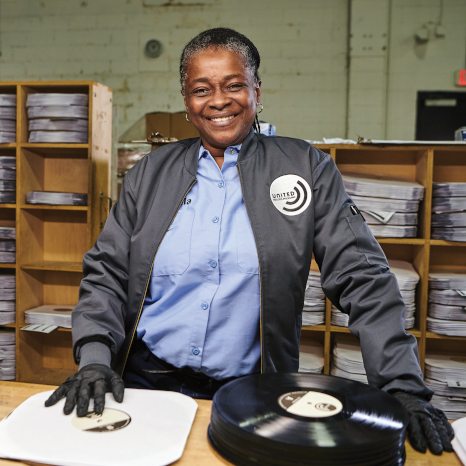As an employer, you have every right to establish and enforce a workplace dress code policy. Your employees’ work clothing is a direct reflection of your business and brand. While many employers stand behind the idea of creating a company-wide dress code, they’re not quite sure where to begin.
At Prudential, we’ve spent decades helping businesses create and implement dress codes in the workplace that benefit both their employees and their brand image. To help you get the ball rolling, here are some of our top tips and things to consider when working out the specifics of your company’s business attire.
Planning Your Company Dress Code

There are many options when it comes to deciding on a workplace dress code that’s right for your business. These options range from standardized uniforms worn by all employees depending on their positions within the company, to more generalized dress codes that require employees to adhere to business professional attire or business casual dress code.
Each option has its own benefits, considerations, and roles for which it is better suited. Deciding what works for your business will come down to the type of service your employees render and the standard to which you need them to hold their appearance and clothing choices.
Standardized Uniforms
Standardized uniforms typically include an entire outfit, from shirts and bottoms to shoes and headwear. These uniforms can be branded with your company logo and customized to match your company colors or help customers distinguish between different roles your employees play in the workplace. Uniforms can also play a vital role in the safety, comfort, and productivity of your employees, depending on your industry.
A good example of this is in the food industry. Chefs, waiters, bussers, and front-of-house staff should all have a neat, distinct uniform that makes them easily recognizable while maximizing their comfort and ability to get their job done. Another example can be found in the automotive industry. Mechanics and technicians wear uniforms (shirts and pants or overalls) and gloves that identify them to customers, while also keeping them safe from common hazards they encounter while doing their jobs.
At Prudential, we stock a range of uniforms for businesses in the automotive, food service, food processing, and healthcare industries, among others
Business Formal

The next level down from standardized uniforms is business formal attire. Typically reserved for black-tie dinners and company events that require everyone to look their very best, this dress code includes outfit options like:
- A dark suit, matching dress pants, a white collared shirt, cufflinks, a pocket square, a tie, and dress shoes
- A dark suit, formal blouse, knee-length skirt or dress pants, and formal flats or heels
Business Professional
Business professional attire is better known as “office wear” and includes some, but not all, the elements of business formal apparel. Worn by professionals in the legal and finance industries, this dress code usually takes the form of:
- A suit or blazer, collared shirt, dress pants, and dress shoes
- A blazer, blouse, knee-length skirt, and formal heels or flats
Compared to business formal, these clothing items can be more varied when it comes to color and pattern.
Business Casual
Business casual clothing is the most common across workplaces in the U.S. Featuring pieces like button-down or polo shirts, dresses, sweaters, chinos, and in some cases, denim pants, business casual gives employees more freedom over their appearance and expressing their personal style. A branded button-down shirt or polo shirt is a great way to boost your business image while still giving employees the freedom of choice when it comes to the rest of their outfit
At Prudential, we stock various high-quality clothing items that are easily incorporated into business casual attire. Branded Poplin, Polo, and Oxford button-down shirts are only some of our bestsellers, helping businesses grow their reputation and brand in a subtle, yet effective way.
Implementing Your Dress Code

Once you’ve decided on the appropriate dress code for your business, the next step is introducing and implementing that policy in your workplace. It may be best to arrange a company-wide meeting to discuss the new dress code and field questions regarding appropriate attire from employees. Additional steps to create an ironclad dress code include:
1. Put It in Writing
You should have a clear list of permissible and unacceptable work clothing, and it should be handed to every employee. A written dress code policy eliminates confusion and ensures that everyone is on the same page.
Your written dress code policy should also clearly state the consequences and actions that may be taken should employees violate the dress code. Another useful addition may be a list of places where employees may source affordable, quality clothing that fits your dress code. You may also list the sources for standardized clothing that you supply to your employees, such as uniform elements from Prudential. Remember to give a copy to all new and existing employees and make sure to update it with any changes you might make.
2. Identify Exceptions
It’s perfectly acceptable to have different dress codes for groups of employees, as long as everyone knows ahead of time what their particular work clothing policy is.
Also, identify if employees who work directly with customers or potential clients have different dress rules than those working in a back office or factory setting. Clarification ahead of time will avoid HR headaches later on. Including simple visual examples of acceptable attire for each department or position within your company ensures everyone knows exactly what they should be wearing and minimizes unintended dress code violations.
3. Clarify
Remember that your definition of terms like “appropriate,” “conservative,” or “proper” may not be the same as others. Clarify all points in your dress code and provide examples of what is and isn’t acceptable.
4. An Optional Casual (Fri) Day
If you are providing a casual or dress-down policy for certain days of the week, or non-customer days, be sure to include a list of acceptable practices for those days, as well. Remind your employees that this is a privilege, not a right, and it can be removed at any time.
Choose Prudential for All Your Dress Code and Uniform Requirement
At Prudential, we have decades of experience helping businesses grow their brand image and reputation through high-quality uniforms, hygiene, and safety equipment. Whether you need help designing a standardized uniform for employees facing safety hazards like fires or chemical burns, or simply want to source the very best quality branded shirts or business casual items, we’ve got you covered.
To learn more about our apparel and unique uniform rental and laundering programs, look through our website or speak to one of our expert customer service representatives at 800-767-5536 today.